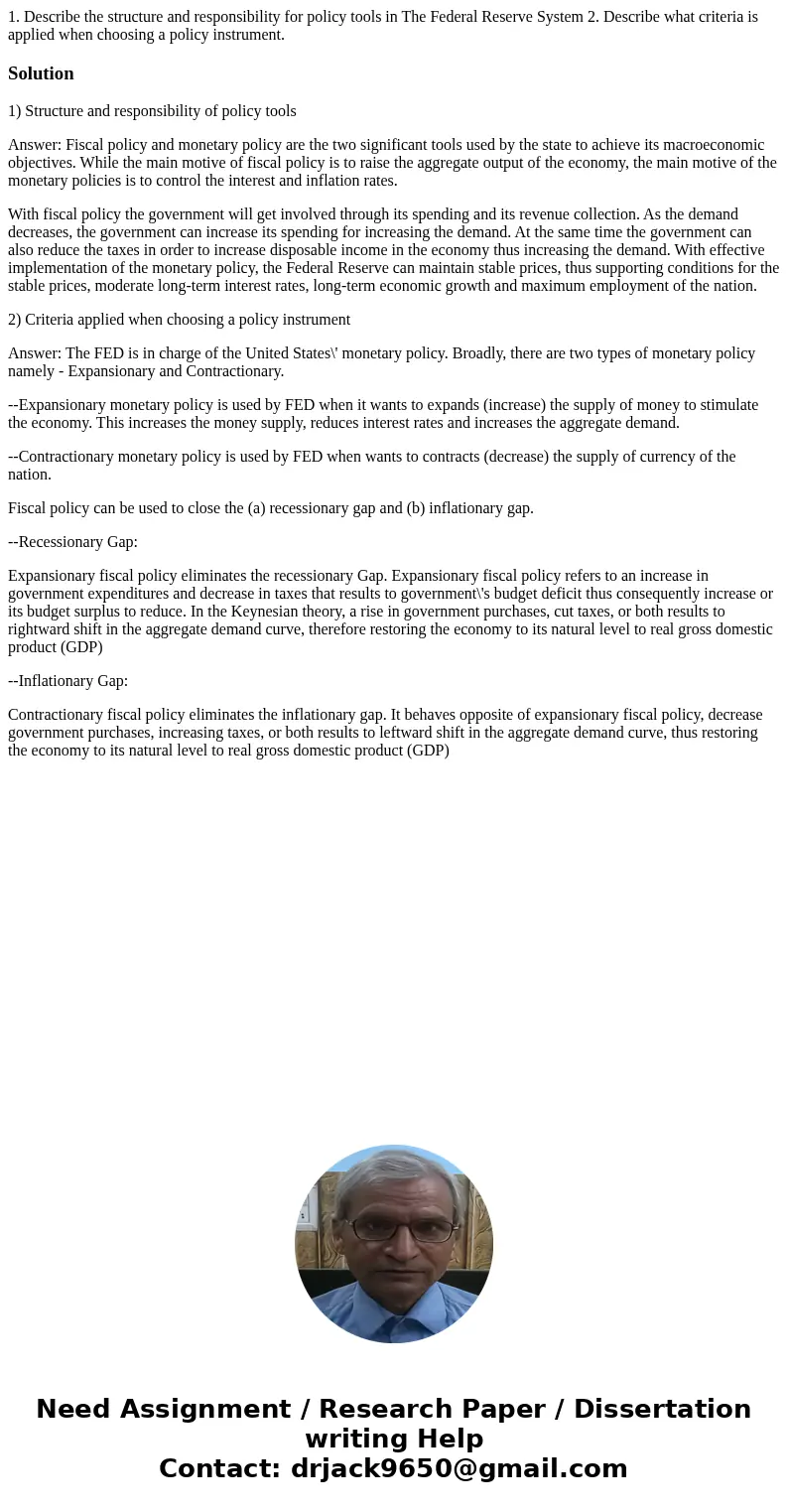1 Describe the structure and responsibility for policy tools
Solution
1) Structure and responsibility of policy tools
Answer: Fiscal policy and monetary policy are the two significant tools used by the state to achieve its macroeconomic objectives. While the main motive of fiscal policy is to raise the aggregate output of the economy, the main motive of the monetary policies is to control the interest and inflation rates.
With fiscal policy the government will get involved through its spending and its revenue collection. As the demand decreases, the government can increase its spending for increasing the demand. At the same time the government can also reduce the taxes in order to increase disposable income in the economy thus increasing the demand. With effective implementation of the monetary policy, the Federal Reserve can maintain stable prices, thus supporting conditions for the stable prices, moderate long-term interest rates, long-term economic growth and maximum employment of the nation.
2) Criteria applied when choosing a policy instrument
Answer: The FED is in charge of the United States\' monetary policy. Broadly, there are two types of monetary policy namely - Expansionary and Contractionary.
--Expansionary monetary policy is used by FED when it wants to expands (increase) the supply of money to stimulate the economy. This increases the money supply, reduces interest rates and increases the aggregate demand.
--Contractionary monetary policy is used by FED when wants to contracts (decrease) the supply of currency of the nation.
Fiscal policy can be used to close the (a) recessionary gap and (b) inflationary gap.
--Recessionary Gap:
Expansionary fiscal policy eliminates the recessionary Gap. Expansionary fiscal policy refers to an increase in government expenditures and decrease in taxes that results to government\'s budget deficit thus consequently increase or its budget surplus to reduce. In the Keynesian theory, a rise in government purchases, cut taxes, or both results to rightward shift in the aggregate demand curve, therefore restoring the economy to its natural level to real gross domestic product (GDP)
--Inflationary Gap:
Contractionary fiscal policy eliminates the inflationary gap. It behaves opposite of expansionary fiscal policy, decrease government purchases, increasing taxes, or both results to leftward shift in the aggregate demand curve, thus restoring the economy to its natural level to real gross domestic product (GDP)

 Homework Sourse
Homework Sourse